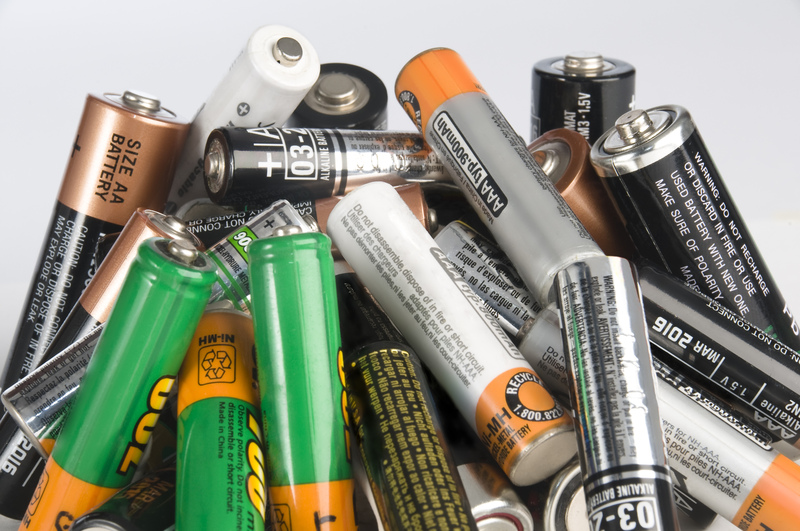Art from the Dump: Redefining What We Consider Trash
Posted on 10/11/2024
In today's consumerist society, throwing things away has become second nature. From food scraps to old clothing, we are constantly discarding items that we no longer need or want. But what if we were to look at these seemingly useless objects in a different light? What if we could find beauty and value in what we once considered trash? This is exactly what some artists have been doing with their work, using discarded materials as their medium and creating thought-provoking pieces that challenge our perception of waste.
The concept of "Trash Art" or "Junk Art" is not a new one. Artists have been repurposing garbage for decades, but it has gained more attention in recent years due to the growing concern for the environment and sustainability. In this article, we will explore the world of Trash Art and how it is redefining our view of what is considered trash.
The Beauty of Trash
One man's trash is another man's treasure - this phrase rings true for many artists who see the potential in discarded items. By using materials that would otherwise end up in landfills, they are not only reducing waste but also giving new life to these objects. And the results can be astonishing.
Take for example the sculptures of American artist El Anatsui. He creates large-scale artworks out of discarded bottle caps, cans, and other metal scraps. These pieces resemble beautiful tapestries or traditional African fabrics and are much more valuable than their humble origins suggest. Through his work, Anatsui challenges our perceptions of what is considered art and raises important questions about consumption and waste.
Similarly, British artist Jane Perkins uses discarded plastic toys, buttons, and household objects to create intricate portraits inspired by famous paintings such as Mona Lisa and The Scream. Her work not only showcases her incredible talent and attention to detail but also urges us to think about how much plastic we use in our daily lives and where it ends up.

Repurposing for a Cause
Aside from creating visually striking pieces, Trash Art can also serve a greater purpose. Many artists use their work to raise awareness about environmental issues and promote sustainability. For example, Brazilian artist Vik Muniz collaborated with garbage pickers in Rio de Janeiro to create large portraits of them using different types of trash found in their daily scavenging. This project not only gave a voice to these marginalized individuals but also shed light on the issue of waste management in the city.
The Challenges of Creating with Trash
While Trash Art may seem like a simple concept, there are challenges that come with using discarded materials as a medium. One of the main obstacles is finding the right materials. Artists often have to spend hours sifting through piles of trash or visiting recycling centers to find the perfect pieces for their work. Not to mention the time-consuming process of cleaning and organizing these materials before they can even begin creating.
There is also the issue of durability. Some materials used in Trash Art may not withstand the test of time, leading to concerns about the longevity of these artworks. Additionally, since most trash items were not designed with art in mind, artists have to find creative ways to manipulate and shape them.
The Pros and Cons of Trash Art
One of the biggest advantages of Trash Art is its impact on the environment. By repurposing discarded materials, artists are helping to reduce waste and promoting sustainability. In addition, this form of art often sparks important conversations about consumption and waste management.
However, there are also some downsides to consider. Trash Art can be seen as controversial, with some critics arguing that it glorifies garbage or promotes hoarding behavior. Others question the authenticity of using trash as an artistic medium and argue that it takes away from traditional art forms.

Tips for Creating Your Own Trash Art
If you're interested in creating your own Trash Art, here are some tips to get you started:
1. Experiment with different materials - from plastic to paper to metal, there are countless items that can be repurposed into art.
2. Be creative with how you use the materials - break, cut, and manipulate them to create unique pieces.
3. Keep an open mind - often what we consider trash can hold surprising potential for artistic value.
4. Don't be afraid of imperfections - since most trash items were not designed for art, embrace their flaws and incorporate them into your work.
The Takeaway
Art from the dump is not just a passing trend - it's a powerful movement that challenges our throwaway culture and encourages us to think outside the box. It proves that beauty can be found in the most unexpected places and that even the smallest actions can make a difference in our environment.
In conclusion, Trash Art is redefining what we consider trash by turning discarded objects into thought-provoking and impactful works of art. While it may have its challenges and criticisms, there is no denying the positive impact it has on our society and the environment. So next time you go to throw something away, ask yourself if it could potentially be transformed into a piece of art instead.










